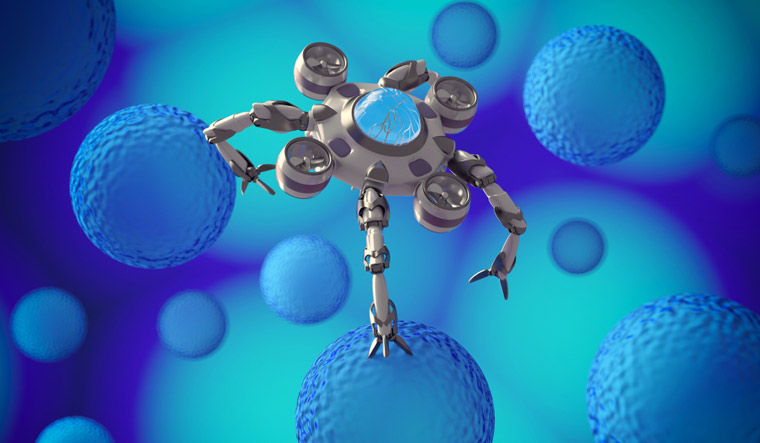Scientists have achieved a significant milestone in the fight against lung cancer by successfully navigating a steerable lung robot through living lung tissue. Lung cancer remains the leading cause of cancer-related deaths in the United States, with some tumors deeply hidden within lung tissue, posing a formidable challenge for surgeons.
This remarkable fusion of cutting-edge technology and medical innovation opens up new avenues for the early detection and treatment of lung cancer. With the ability to reach previously inaccessible targets within the lungs, this steerable lung robot represents a significant leap forward in the battle against this deadly disease. The future holds the promise of more precise and minimally invasive interventions, ultimately improving the prognosis for those affected by lung cancer.
Researchers from UNC-Chapel Hill and Vanderbilt University have been diligently working on the creation of an incredibly flexible yet robust robot designed to traverse the intricate landscape of the lung. Their latest achievement, detailed in a recent publication in Science Robotics, showcases the robot's autonomous capabilities in maneuvering from "Point A" to "Point B" within a living laboratory model while deftly avoiding vital structures such as delicate airways and blood vessels.
Dr. Jason Akulian, co-author of the paper and Section Chief of Interventional Pulmonology and Pulmonary Oncology at UNC, emphasizes the significance of this technology, stating, "This technology allows us to reach targets we can't otherwise reach with a standard or even robotic bronchoscope. It gives you that extra few centimeters or few millimeters even, which would help immensely with pursuing small targets in the lungs."
This remarkable achievement was made possible through a collaborative effort that seamlessly merged expertise from medicine, computer science, and engineering. Key contributors to the project included Dr. Ron Alterovitz and Dr. Yueh Z. Lee from UNC, as well as Robert J. Webster III from Vanderbilt University and Alan Kuntz from the University of Utah.
The robot itself comprises various components, with a mechanical control system providing precise thrust for forward and backward movement. The needle, a pivotal component, is crafted from a nickel-titanium alloy and features laser etching to enhance its flexibility, enabling it to effortlessly navigate through lung tissue. As it advances, the needle's etching enables it to skillfully manoeuvre around obstacles. Furthermore, this versatile robot can be coupled with attachments such as catheters to perform intricate procedures like lung biopsies.
Crucially, for the needle to navigate lung tissue effectively, it relies on a detailed understanding of its path. The research team accomplished this by employing CT scans of the subject's thoracic cavity and harnessing the power of artificial intelligence to construct three-dimensional models of the lung, encompassing its airways, blood vessels, and the intended target. Using this three-dimensional model, coupled with AI-driven software, the needle is instructed to autonomously traverse from "Point A" to "Point B," all the while evading critical structures.










